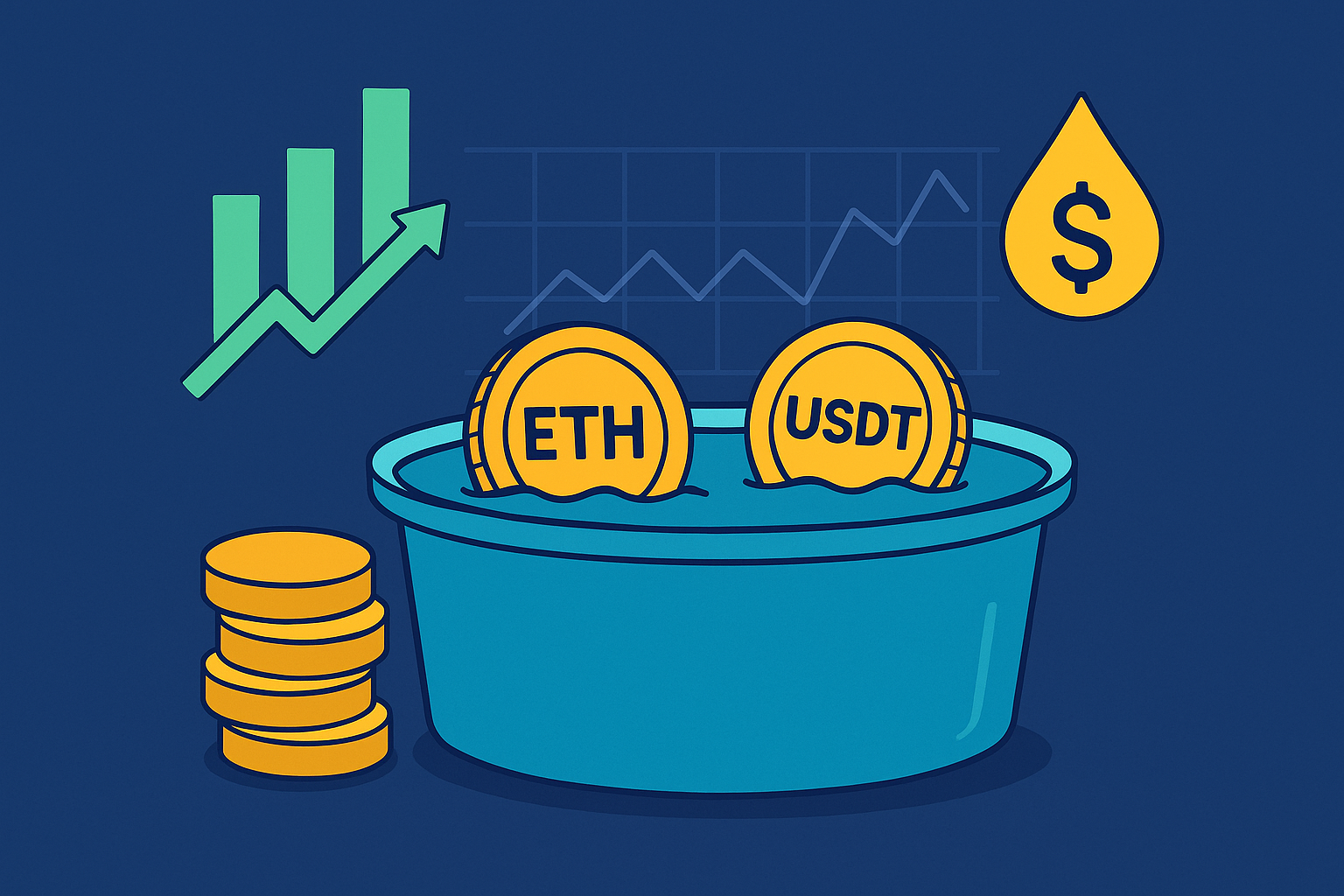If you’re new to the world of crypto and DeFi (decentralized finance), you may have heard the term “liquidity pool”. It might sound confusing at first, but don’t worry — it’s easier than you think.
In this article, we’ll explain what liquidity pools are, how they work, and why they are important in crypto trading. We’ll keep everything beginner-friendly, with no technical jargon.
Contents
What Is a Liquidity Pool?
A liquidity pool is a collection of cryptocurrencies locked into a smart contract. This pool provides the funds needed for people to trade crypto on decentralized exchanges (DEXs) like Uniswap, PancakeSwap, or SushiSwap.
Instead of relying on buyers and sellers to match orders (like in traditional exchanges), DEXs use liquidity pools to make trading fast and smooth.
Why Do We Need Liquidity Pools?
On a regular exchange, trades happen between people. If you want to sell Bitcoin, you need to wait for someone to buy it at your price.
But with a liquidity pool, there’s no waiting. The pool already has the crypto you want to buy or sell.
This makes trading:
-
Faster
-
More efficient
-
Open 24/7, with no middleman
How Do Liquidity Pools Work?
Let’s use a simple example.
Imagine a USDT/ETH liquidity pool. It has two tokens:
-
USDT (Tether)
-
ETH (Ethereum)
People add both tokens to the pool in equal value (e.g., $1,000 of USDT and $1,000 worth of ETH).
When a trader wants to swap USDT for ETH (or vice versa), they take one token out and put the other in. The pool adjusts prices based on how much of each token is left — this is called an automated market maker (AMM).
Who Provides the Liquidity?
Anyone can provide liquidity. These people are called liquidity providers (LPs).
To join a pool, LPs deposit two tokens (like ETH and USDT) into the pool. In return, they earn a small fee every time someone makes a trade using that pool.
For example, if a pool charges a 0.3% fee per trade, that fee is split among all liquidity providers based on their share in the pool.
This is how people earn passive income in DeFi.
Pros of Liquidity Pools
✅ Earn Rewards: LPs get a share of trading fees.
✅ No Middlemen: Pools run automatically with smart contracts.
✅ Supports DeFi: Pools are the foundation of decentralized exchanges.
✅ Anyone Can Join: No bank or permission required — just a crypto wallet.
Risks of Liquidity Pools
❌ Impermanent Loss: This happens when the value of your tokens changes while in the pool, possibly making your profit lower than just holding the tokens.
❌ Smart Contract Bugs: If the code has errors, funds in the pool can be at risk.
❌ Scam Projects: Some pools are created by bad actors. Always use trusted platforms.
How to Use a Liquidity Pool (Step-by-Step)
Here’s a simple guide for beginners:
-
Choose a DEX: Use trusted ones like Uniswap, PancakeSwap, or SushiSwap.
-
Connect Your Wallet: Use MetaMask, Trust Wallet, or similar.
-
Pick a Pool: Choose a pair like ETH/USDT or BNB/CAKE.
-
Deposit Tokens: Add equal value of both tokens.
-
Earn Rewards: Collect a share of the fees from every trade.
You can remove your tokens anytime, along with any rewards earned.
Is It Worth It?
Liquidity pools can be a good way to earn passive income in crypto, especially if you:
-
Understand the risks
-
Use trusted platforms
-
Choose well-known token pairs
They’re also great for learning more about how decentralized finance works.
Final Thoughts
Liquidity pools are an important part of the DeFi world. They let people trade crypto without needing buyers or sellers to match. At the same time, they give investors a way to earn fees by providing tokens.
If you’re a beginner, start small. Try joining a trusted pool with popular tokens. Learn how it works and watch how your rewards grow over time.




